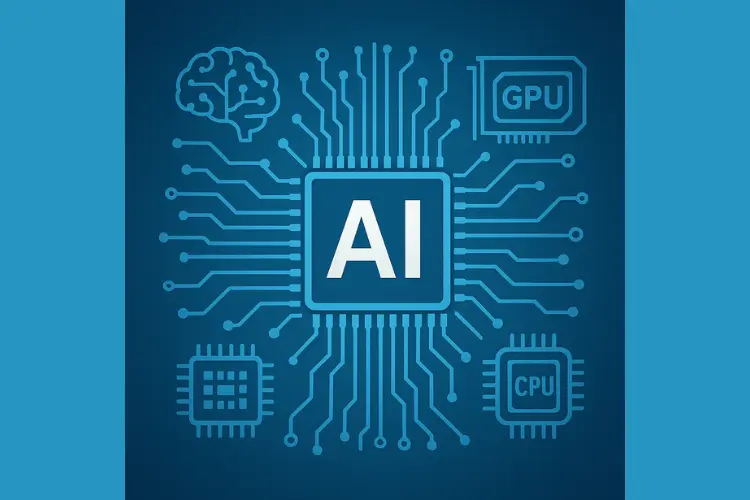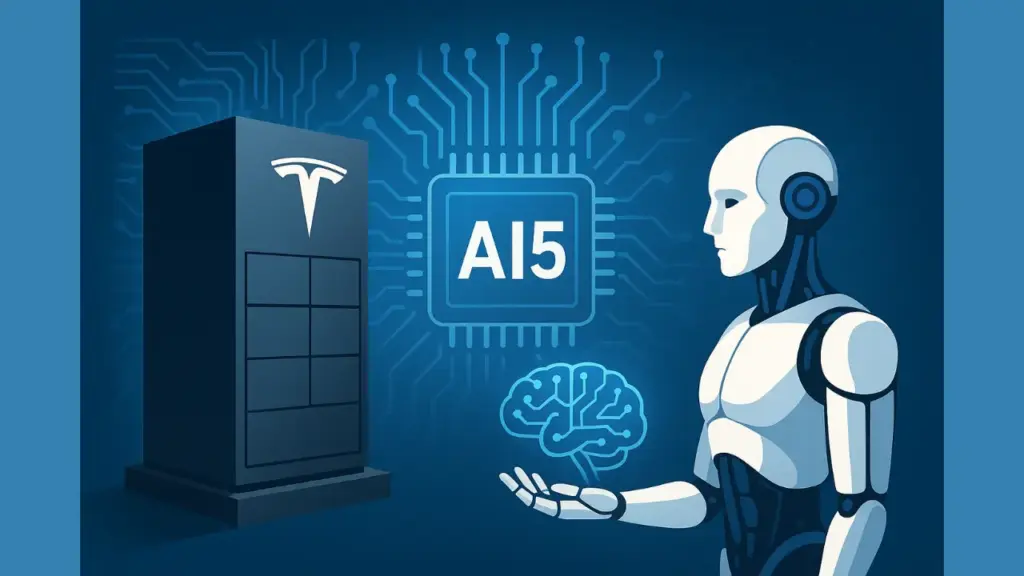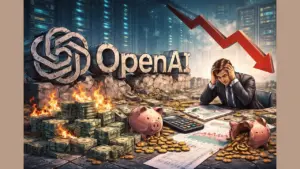Introduction
Tesla has never been just a car company—it has always presented itself as a technology leader. Under Elon Musk’s direction, the company has pushed boundaries in AI and autonomous driving. One of Tesla’s boldest projects was the Dojo supercomputer, a system designed to power its self-driving ambitions.
But recently, Musk announced a major shift. Tesla is halting the Dojo project and redirecting resources toward AI5/AI6 chips and synthetic data generation. This surprising move has left analysts debating: is this a smart pivot or a sign of deeper struggles at Tesla?
1. Tesla’s Dojo Supercomputer – What Was It Supposed to Do?
The Dojo supercomputer was designed as Tesla’s secret weapon in the race toward autonomy. Instead of depending on NVIDIA GPUs or third-party systems, Tesla aimed to build a fully custom AI training engine.
Its purpose was clear: process the enormous amounts of driving data collected by Tesla’s global fleet. With millions of cars generating footage, Tesla wanted Dojo to train its self-driving AI faster and more accurately than competitors.
When it was announced, Dojo was praised as an ambitious leap in AI infrastructure. Some predicted it might even allow Tesla to enter the high-performance computing market by renting Dojo’s power to other industries.
Yet, despite years of work, the project is now canceled.
2. Why Did Elon Musk Scrap Dojo?
Ending Dojo surprised many, but Musk has a history of cutting projects that don’t deliver fast enough. Several factors likely influenced the decision:
- Extreme costs: Building a proprietary supercomputer requires billions of dollars in R&D, manufacturing, and energy.
- Scaling challenges: Competing chips, especially NVIDIA’s H100, have proven extremely powerful, making Dojo harder to justify.
- Competitive pressure: Tesla faces rivals like Waymo and Cruise. Waiting years for Dojo’s payoff could cost Tesla market leadership.
- Refocusing strategy: Instead of spreading resources, Tesla wants to double down on chip design and synthetic data—areas where it sees long-term advantage.
For Musk, the decision is about speed. Tesla cannot afford to be left behind in the race to autonomy.
3. The Big Pivot: AI5 and AI6 Chips
The heart of Tesla’s new strategy lies in AI5 and AI6 chips. Unlike Dojo, which was built as a massive supercomputer, these chips are specialized processors designed to run and train AI more efficiently.
Why are these chips a big deal?
- Purpose-built design: They’re optimized specifically for Tesla’s neural networks, not for general computing.
- Lower energy demand: More efficient than traditional GPUs, they help Tesla balance performance with sustainability.
- Independence from suppliers: By building its own chips, Tesla reduces reliance on NVIDIA and secures tighter control of its hardware stack.
Tesla already designs chips for its Full Self-Driving (FSD) systems, but AI5 and AI6 could represent a huge leap forward. If successful, they could compete with innovations from Google’s TPU and Apple’s M-series chips.
This strategy mirrors what a fractional CTO often advises startups: invest in areas where you can lead, cut distractions, and put your money where long-term impact is most likely.
4. Synthetic Data – Tesla’s Secret Weapon?
Alongside chips, synthetic data is becoming central to Tesla’s AI push. Real-world driving footage is valuable but limited. It takes years to collect rare scenarios, and some dangerous events cannot be ethically tested on real roads.
What is synthetic data?
Synthetic data is artificially generated using simulations. For Tesla, it means creating millions of driving environments—like icy highways, sudden lane changes, or unexpected pedestrian crossings—without waiting for those events to occur in real life.
Why does it matter?
- Speed: Tesla can train on billions of driving situations in less time.
- Safety: Scenarios too risky for real roads can be safely tested virtually.
- Scale: Unlike real-world data, synthetic datasets can grow infinitely.
However, there are risks. Simulated data doesn’t always capture real-world unpredictability. If synthetic training dominates without strong real-world checks, performance gaps could emerge. Tesla will need to balance both sources carefully.
5. What This Means for Tesla’s Self-Driving Ambitions
Tesla’s overhaul has direct implications for its autonomous driving timeline.
- Faster development: AI5/AI6 chips combined with synthetic data could accelerate learning cycles.
- Competitive advantage: If executed well, Tesla could leapfrog rivals like Waymo and Cruise.
- Regulatory questions: Governments may challenge whether systems trained heavily on synthetic data are safe for public use.
- Public confidence: Tesla must prove safety to regain consumer trust after past controversies around Autopilot.
In short, Tesla is betting everything on a faster, more flexible AI pipeline.
6. Broader Impact on AI Hardware Innovation
Tesla’s decision to drop Dojo has implications beyond self-driving cars. It signals a shift in the AI industry:
- Customized chips are the future: More companies are moving away from generic supercomputers toward task-specific processors.
- Rising competition: Tech giants like Amazon, Google, and Apple are all investing in their own AI chips. Tesla joining this race intensifies the competition.
- Investment priorities: Instead of spending endlessly on giant computing clusters, companies may focus on smaller, smarter, and more efficient designs.
For the broader AI ecosystem, Tesla’s pivot underscores a new reality: owning your hardware may be as important as owning your software.

Conclusion
Tesla’s decision to kill Dojo and pivot toward AI5/AI6 chips and synthetic data is one of the company’s boldest moves yet. It shows Musk’s willingness to abandon projects that no longer fit the strategy and redirect focus toward innovations that promise faster results.
If Tesla succeeds, it may set the standard for how autonomous driving systems are trained and deployed worldwide. If it fails, this could become one of Musk’s most expensive experiments.
What stands out most is the adaptability of the move—a trait admired by many leaders, including those in fractional CTO roles guiding startups through tough pivots.
At StartupHakk, we see this as a lesson for innovators: agility and the courage to pivot may define who thrives in the AI era. Whether Tesla’s gamble pays off remains to be seen, but one thing is certain—the world is watching closely.




